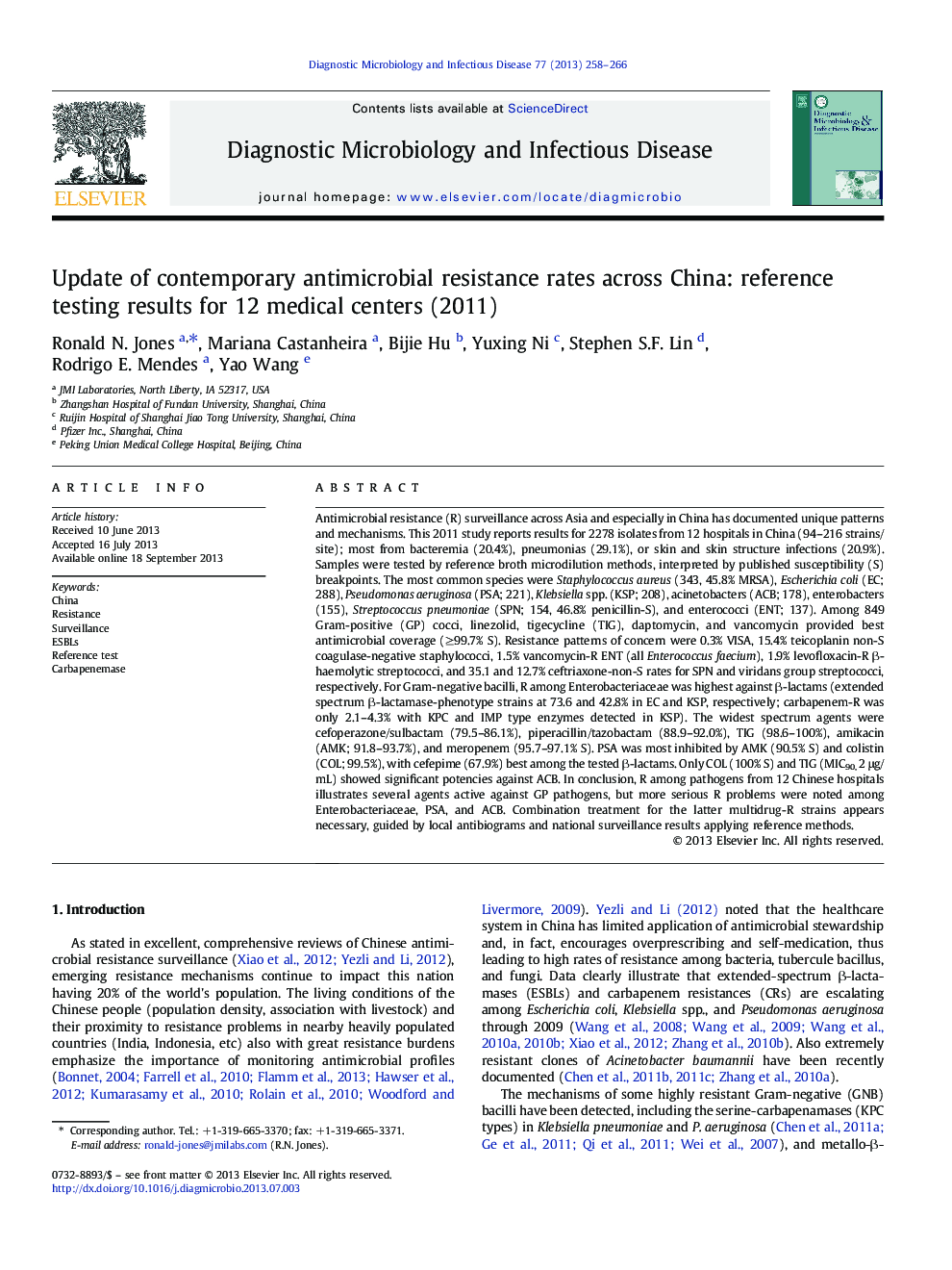| Article ID | Journal | Published Year | Pages | File Type |
|---|---|---|---|---|
| 6115948 | Diagnostic Microbiology and Infectious Disease | 2013 | 9 Pages |
Abstract
Antimicrobial resistance (R) surveillance across Asia and especially in China has documented unique patterns and mechanisms. This 2011 study reports results for 2278 isolates from 12 hospitals in China (94-216 strains/site); most from bacteremia (20.4%), pneumonias (29.1%), or skin and skin structure infections (20.9%). Samples were tested by reference broth microdilution methods, interpreted by published susceptibility (S) breakpoints. The most common species were Staphylococcus aureus (343, 45.8% MRSA), Escherichia coli (EC; 288), Pseudomonas aeruginosa (PSA; 221), Klebsiella spp. (KSP; 208), acinetobacters (ACB; 178), enterobacters (155), Streptococcus pneumoniae (SPN; 154, 46.8% penicillin-S), and enterococci (ENT; 137). Among 849 Gram-positive (GP) cocci, linezolid, tigecycline (TIG), daptomycin, and vancomycin provided best antimicrobial coverage (â¥99.7% S). Resistance patterns of concern were 0.3% VISA, 15.4% teicoplanin non-S coagulase-negative staphylococci, 1.5% vancomycin-R ENT (all Enterococcus faecium), 1.9% levofloxacin-R β-haemolytic streptococci, and 35.1 and 12.7% ceftriaxone-non-S rates for SPN and viridans group streptococci, respectively. For Gram-negative bacilli, R among Enterobacteriaceae was highest against β-lactams (extended spectrum β-lactamase-phenotype strains at 73.6 and 42.8% in EC and KSP, respectively; carbapenem-R was only 2.1-4.3% with KPC and IMP type enzymes detected in KSP). The widest spectrum agents were cefoperazone/sulbactam (79.5-86.1%), piperacillin/tazobactam (88.9-92.0%), TIG (98.6-100%), amikacin (AMK; 91.8-93.7%), and meropenem (95.7-97.1% S). PSA was most inhibited by AMK (90.5% S) and colistin (COL; 99.5%), with cefepime (67.9%) best among the tested β-lactams. Only COL (100% S) and TIG (MIC90, 2 μg/mL) showed significant potencies against ACB. In conclusion, R among pathogens from 12 Chinese hospitals illustrates several agents active against GP pathogens, but more serious R problems were noted among Enterobacteriaceae, PSA, and ACB. Combination treatment for the latter multidrug-R strains appears necessary, guided by local antibiograms and national surveillance results applying reference methods.
Related Topics
Life Sciences
Immunology and Microbiology
Applied Microbiology and Biotechnology
Authors
Ronald N. Jones, Mariana Castanheira, Bijie Hu, Yuxing Ni, Stephen S.F. Lin, Rodrigo E. Mendes, Yao Wang,
